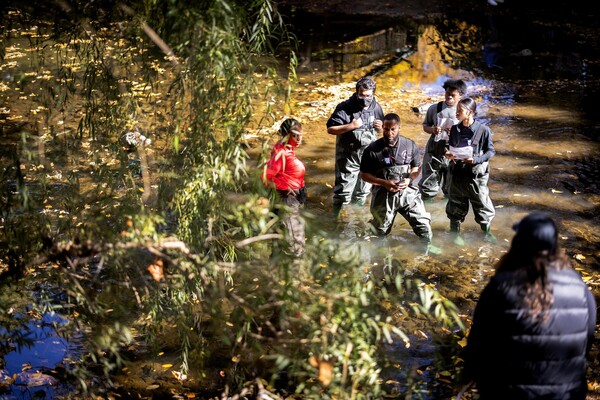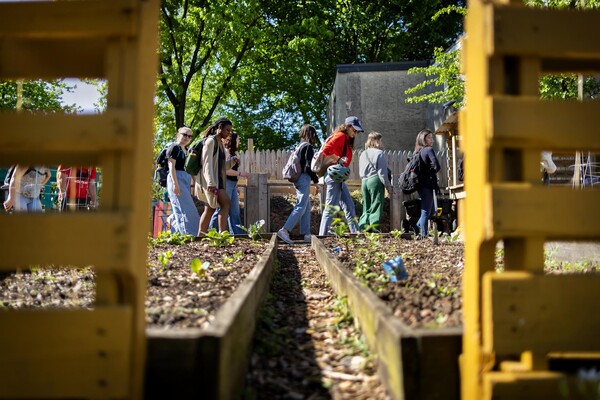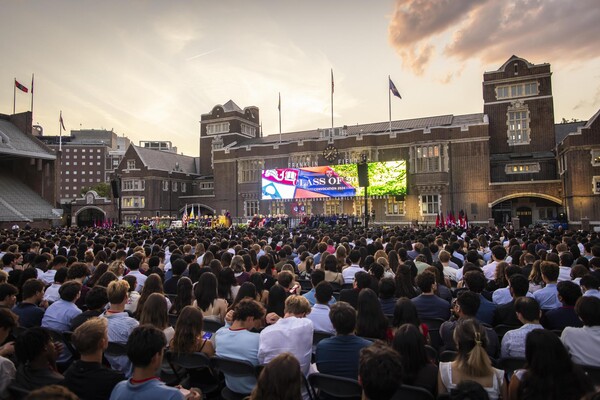30th Street Station
It is one of Philadelphia’s iconic structures, a landmark that sits, alone, on an island between Center City and University City.
It is the transportation hub of Philadelphia, a true working building that welcomes thousands of rail travelers each weekday morning, and then again for the evening rush.
For all of its functionality, 30th Street Station is also an aesthetic treasure—a historic building that thousands use every day but few take the time to fully appreciate.
Look around West Philadelphia’s signature structure, and you’re likely to turn up any number of surprises: From architectural brilliance to museum-worthy art to a unique gastro-pub.
An instant classic
The station was designed by the Chicago architecture firm of Graham, Anderson, Probst & White. It was completed in 1933, four years after construction began.
Called Pennsylvania Station upon its opening, it was immediately recognized as a modern classic and served as the centerpiece of a much-improved Philadelphia transportation system. The station’s very existence, in fact, was the direct result of The Philadelphia Improvements project, a citywide transportation plan that also led to the construction of the Benjamin Franklin Parkway.
And while the Parkway may grace more Philadelphia postcards, there’s no denying the sturdy elegance or longstanding service of 30th Street Station.
The building stretches more than 630 feet along the Schuylkill River and more than 320 feet along Market Street. Its stately exterior is covered with Alabama limestone, and enormous Corinthian columns, dramatically lit at night, accent its eastern and western entrances.
As impressive as the exterior is, it’s the main concourse that steals the show: The space stretches 290 feet long and features a recently refurbished coffered ceiling that soars 95 feet overhead.
Hidden charms
The station’s interior is also where the business of the day gets done: Mostly, that means getting people where they need to go. In fact, 30th Street is the second-busiest train station in the country (behind only New York’s Penn Station).
Amid all the hustle and bustle, however, the station also offers some hidden charms—including a historic piece of artwork that few ever notice.
Tucked away in a large room between the main concourse and the elevated platforms of SETPA’s regional rail system—you may have walked through here en route to the nearby restrooms—inquisitive visitors can find Karl Bitter’s impressive 1895 sculpture, “Spirit of Transportation.” The work portrays the notion of progress in transportation, embodied by a small child with a toy airplane.
Directly behind the Bitter work is a display on the history of the Pennsylvania Railroad, as well as details of The Philadelphia Improvements plan. The exhibit is worth a stop, though we’ve rarely seen anyone do just that.
The station also offers visitors various shopping destinations—including a flower stand and a record and movie store—as well as some standard fast-food eateries and coffee stands. You can grab a sandwich at Subway, a pretzel at Auntie Anne’s, coffee and breakfast at the almost always packed (in the mornings, at least) Au Bon Pain or a burger at McDonalds. A nearby food court, looking out onto Market Street, makes for a decent place to sit down and eat.
With so many choices, you probably won’t have much trouble finding something quick and cheap to satisfy your hunger. But if you’re willing to slow down, relax and enjoy a meal of somewhat higher standards, Bridgewater’s Pub—tucked away in the station’s southwest corner—is your best bet.
Given the fact that it has no competition in the terminal, what’s most remarkable about Bridgewater’s is that it tries so hard—and succeeds—to be more than a “train station bar.” This warm, comfortable pub boasts great service, above-average bar food (we’ve seen frog legs on the menu) and an impressive selection of beers, including several local brews.







